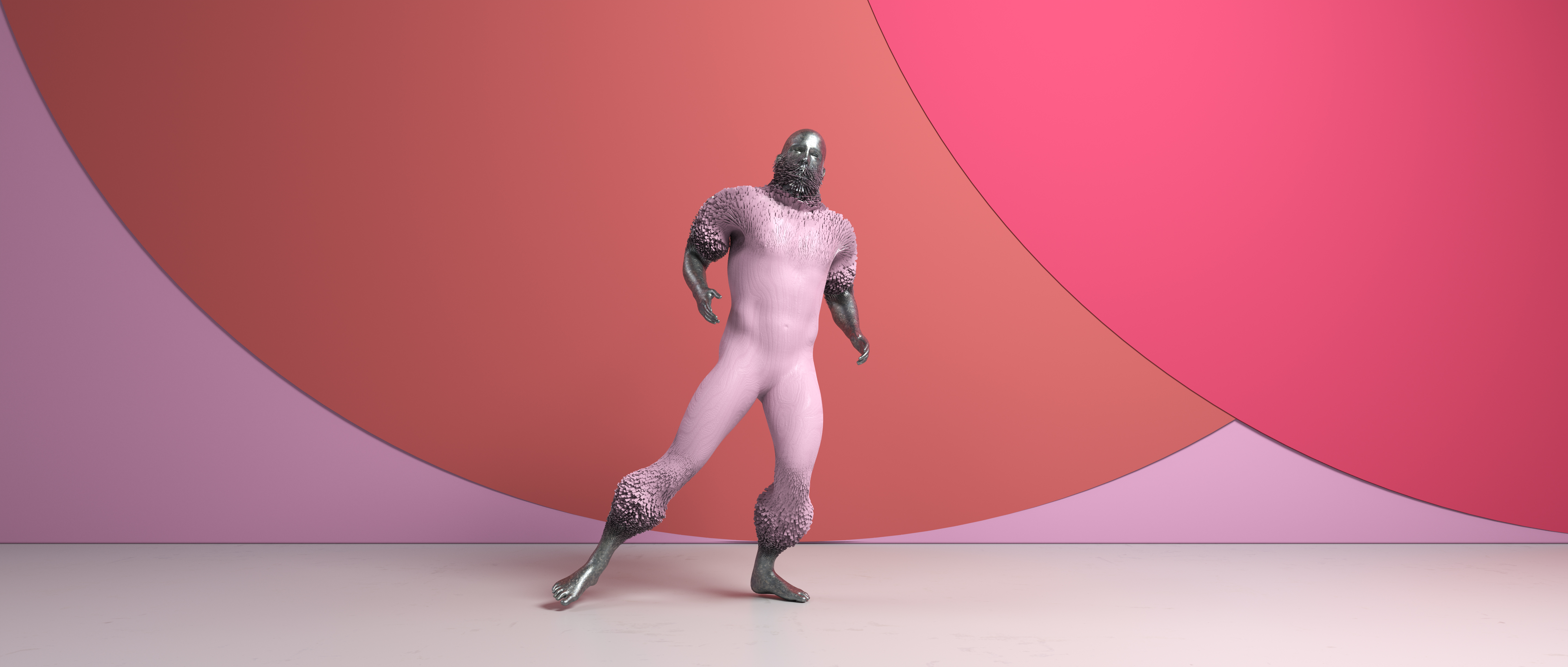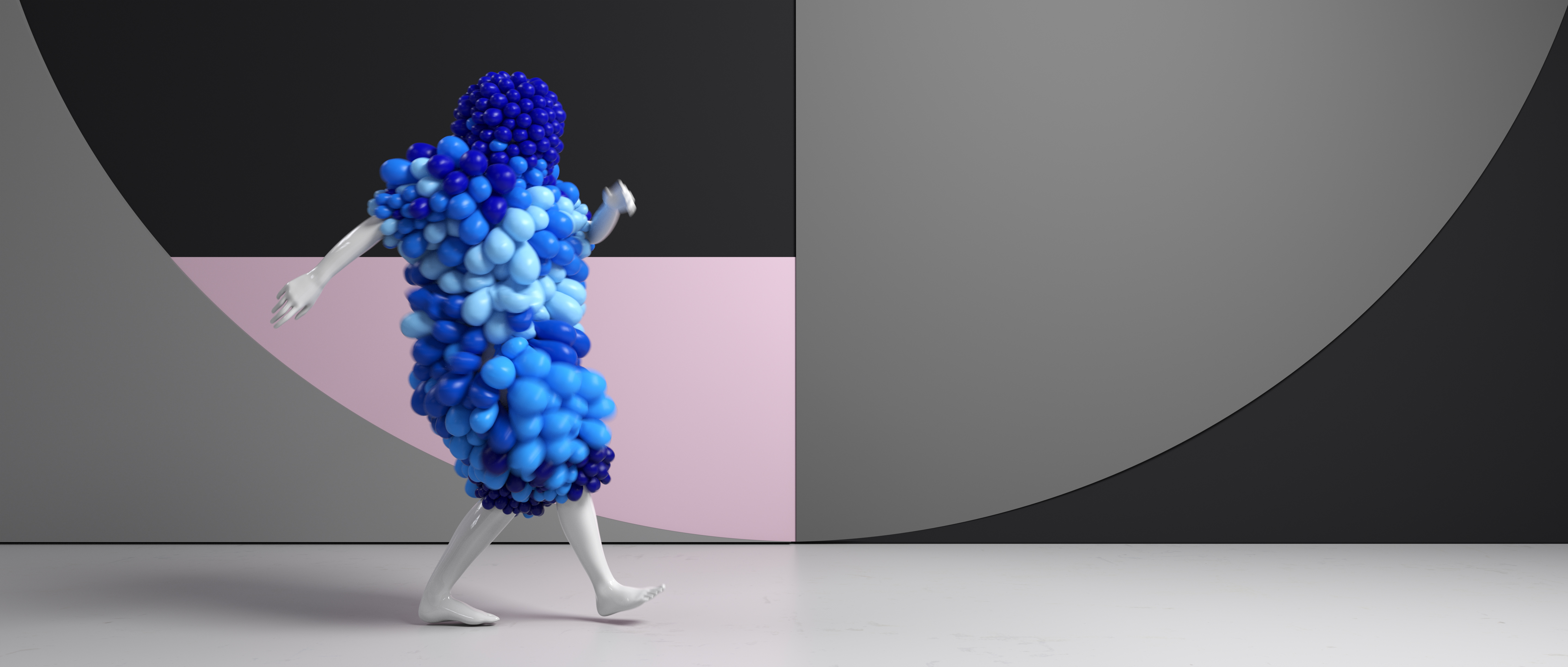Every now and then something in the visual effects, animation and design world comes along that manages to resonate with, well, pretty much everyone. Such was the impact of Method Studios’ motion captured dancers with multiple ‘coverings’ made of fur, feathers, particles and other effects for the 2016 AICP Sponsor Reel. What could be enjoyed as simply just sheer fun was also a technical triumph in which Houdini played a big part, since the reel incorporates not only motion capture but also procedural animation and dynamic effects simulations to showcase the commercial production awards.
The Idea

The AICP Sponsor Reel brief was “completely open”, says Method director Rupert Burton, who notes that agency RSA, Method’s client, wanted the film to have lots of energy and attitude. What better way to provide that than through dancing. “Dancing is a language that everyone speaks,”notes Burton, “and we’d always wanted to work with motion capture so this seemed like the perfect opportunity to play around creatively.”
Method began by downloading some basic mocap files available on the internet for testing. These were rudimentary, at best, but it allowed artists to quickly craft designs and motions for the dancing characters. Houdini’s procedural abilities were put to the test here to experiment. “There were some really interesting effects that didn’t make it through the development round, some because they were technically too challenging while others just looked mad crazy,” admits Burton.
The Motion Capture Shoot
Armed with some test footage, Method then embarked on a motion capture shoot at House of Moves in Los Angeles. They sent male and female 3D models beforehand to allow for a real-time display during the capture process.
This was so handy to see how accurate animation data would be. We hired two brilliant professional dancers who were comfortable performing a wide range of dancing styles. They also improvised a lot and brought their own personality to the characters.
by Rupert Burton
At House of Moves, two-to-three minute bursts of dancing in various styles were captured at a time, making up a total of about 50 takes. The next step would be to apply procedural animation and effects to the mocap data. Method received .fbx files from House of Moves that contained character geometry fully skinned with a t-pose and moving with the motion capture data. These were then converted to an Alembic file and occasional processing through CHOPs was required when the actual blend from t-pose became necessary.
From Data to Dancing
Then came the process of distinguishing dancers there are 45 characters with a flourish of effects; all the while Method aimed at keeping the characters “dynamic and tactile,” notes Houdini FX Artist Tomas Slancik. Here’s how some of the main effects were achieved, as Slancik outlines:

Feathers, Scales and Leaves - these all used a similar setup utilizing an in-house Houdini-based feather system, with slight customizations. They started with painting actual "feathers" on the t-pose geometry, then snapped these onto the dancing character. We then applied feather dynamics, which was either a simple custom spring based solver with post bend deformation, or in the case of leaves a wire sim. For the blue feathered character we created additional cloth sims for the falling feathers.
Fur - we used the standard Houdini fur tools on these characters, and applied some minor customization. The tools were artist friendly, and even allowed non Houdini users to create a variety of fur styles very easily. Pretty much all of them used post sim length constraints to fix the stretching that occurred on the curves. We were impressed with the speed and versatility of Houdini fur, especially Mantra’s ability to render millions of fur strands in very little time.
Beadstrings, Clothstrips – starting off from the balloon lady setup, we did a spinoff using grain solvers for these.They worked pretty well, then a bit of temporal smoothing was applied through CHOPs to remove occasional jitter. The grain solver was another of those useful solvers used across the board, obviously on sand simulations but also to add variety by scattering small beads on the floor.
Marshmallow Man - another of the experiments that worked really well. The outer shell was created using VDB volumes from the body geometry, then turned into tetrahedrons for the FEM sim. The innermost tetrahedrons were constrained to the dancer which was driving motion, but still kept the outside squishy and soft.

Blue Balloon Lady - tiny non-intersecting balloons were attached to a t-pose which then gradually 'inflated' through a rest position during the FEM simulation to their final shape. It was more like a proof of concept whether FEM would be able to handle all the inter-balloon and character collisions and provide stable results for a fast moving character, and it did.
Inflated Balloon Man - cloth solver on the expanded body geometry, constrained at extremities while a narrower body geometry was used as a collider. A custom normal force was applied to simulate internal pressure and keep the balloon inflated.
Stringy Forms - this is created using a combination of procedural curve generation setups, mostly using VEX. The movement was achieved either through advecting by volume velocity fields or using a wire solver on top,depending on which ones you refer to. But I'd say Houdini's wire solver was the most used solver for this piece, it's really flexible and fast.
Light - there are several dark scenes lit by emission shaders using Mantra PBR. For some it was necessary to use geometry lights instead for reducing the noise, while others worked just fine with light emitting shaders.
Other characters - there were a few non-Houdini animations that got included. The long cloth ribbons character were simulated in Maya’s ncloth, then rendered in Mantra while the neon rasta man was all made in Cinema 4D.
The go-to Solutions in Houdini
On top of the solvers Slancik mentions above, he says “the most common phrase” in the Method office was ‘Just Point Deform it’, meaning the Point Deform SOP formed a large part of making the shots possible. “It allowed us to develop any effect on the t-pose then easily deform with motion captured geometry. That was used for either the final effect or individual parts, like for 'constraining' fixed points of balloons, bead strings, cloth strips, marshmallow, to animation before running a sim on it.”

Another often used attribute of Houdini for the reel was VDB volumes, which Method employed for geometry processing and collision geometry. Slancik says that much VEX code was written, too, usually in the form of wrangle nodes. “Also,” he notes,
Houdini 15’s new material layering workflow and shaders were used a lot. It was really easy and intuitive even for non-Houdini artists to use them, but still very flexible to tweak and expand on when effects required it. And obviously the biggest Houdini feature of all was Mantra itself for rendering.
by Tomas SlancikMajor Effects On The Screen, On Time
With 45 different characters to create, this reel could have been a time consuming project. But Method delivered it in two months with a core team of just three people, and another three working on it part-time. Slancik attributes some of that speed to the flexibility of Houdini. “We needed a procedural setup that would allow for improvisation and customization. It would start as an idea in the morning, like 'let's do a balloon lady’ and by the evening we had a version ready for render.”

Most of the effects took one or two days to set up and then went through several iterations of polishing and additional lookdev if they were chosen. Setups varied, but many parts were reusable, which is another strong part of Houdini. Once you develop something for one effect, you can easily use or customize it to fit another. So Houdini really enabled us to experiment, rather than be locked to and follow particular workflows.
by Tomas SlancikCredits
Client: AICP/RSA
Project: 2016 AICP Sponsor Reel
Concept, Design & Direction: Method Design
Director: Rupert Burton
Creative Director: Jon Noorlander
Art Director: Johnny Likens
Production: Method Studios NY
Producer: Adrienne Mitchell
VFX: Method Studios
Houdini FX Artist: Tomas Slancik
Houdini FX Artist: Vraja Parra
Rigger: Ohad Bracha
Motion Capture: House of Moves
Motion Capture Supervision: Rupert Burton, Shane Griffin
Music: Major Lazer Light It Up (Remix)
COMMENTS
Gloriousbunny 8 years, 3 months ago |
WOW, this work is impressive!!
caJPFly 5 years, 9 months ago |
Really nice ! Great job
Please log in to leave a comment.